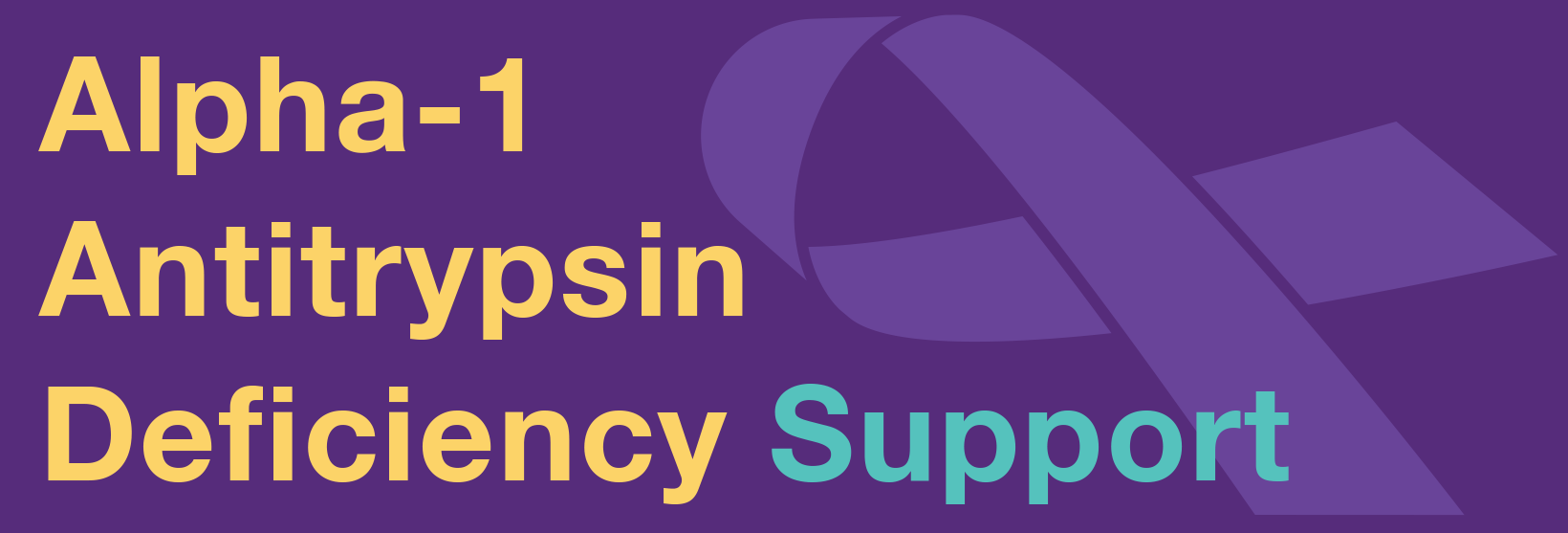Alpha-1 Antitrypsin Deficiency, or Alpha-1, is an inherited, genetic condition that is passed on from generation to generation. It is characterized by a reduced level in the blood of a protein called alpha-1 antitrypsin, abbreviated as AATalpha-1 antitrypsin More. Virtually all the alpha-1 antitrypsin in the blood is produced in the liver. In individuals with Alpha-1, the decreased levels of AATalpha-1 antitrypsin More are the result of abnormalities in the AATalpha-1 antitrypsin More gene. This abnormality causes the AATalpha-1 antitrypsin More to function poorly, to be poorly manufactured, or most commonly, to be poorly released from the liver cells.
Alpha-1 Antitrypsin Deficiency is not a disease. Instead, it is more accurately described as a condition or a disorder that increases the risk of developing disease, particularly of the lungs and the liver. In order to be classified as having Alpha-1, an individual must inherit at least one abnormal AATalpha-1 antitrypsin More gene. Individuals who have one abnormal AATalpha-1 antitrypsin More gene and one normal AATalpha-1 antitrypsin More gene are sometimes referred to as heterozygotes or “carriersAn Alpha-1 Carrier is a person who has one normal ATT gene (M) and one defective AAT gene (usually S or Z). It does NOT mean you cannot get sick. More.”
Many of the risk factors that can lead to disease in Alphas are known, and the management of these risk factors is one of the most important ways in which individuals with Alpha-1 can directly affect the quality of their lives. Recently, there has been a growing appreciation that individuals who have been identified as carriersAn Alpha-1 Carrier is a person who has one normal ATT gene (M) and one defective AAT gene (usually S or Z). It does NOT mean you cannot get sick. More of the Alpha-1 gene also may be at increased risk for disease development. Therefore, limiting exposure to environmental risk factors is important for these individuals as well.
The severity of Alpha-1 is a function of the type of abnormal Alpha-1 genes inherited. Under a system called “Pi-typing,” numerous types of AATalpha-1 antitrypsin More genes have been identified and named, allowing for each type to be studied and evaluated. For example, the AATalpha-1 antitrypsin More genes Z and Null represent two Pi-types that are often associated with severe AATalpha-1 antitrypsin More deficiencies. Another type of AATalpha-1 antitrypsin More gene, the F Pi-type, produces a form of Alpha-1 in which the amount of AATalpha-1 antitrypsin More in the blood is normal, but the AATalpha-1 antitrypsin More does not perform properly. Interestingly, there also are abnormalities of the AATalpha-1 antitrypsin More gene that do not affect either the blood levels of the AATalpha-1 antitrypsin More protein or how the AATalpha-1 antitrypsin More functions.
While it is apparent that persons with Alpha-1 are at increased risk of developing life-threatening liver and lung disease, as well as other medical conditions, many individuals with severe deficiency remain asymptomatic throughout their lives. The reasons for this remain the focus of intense investigation. For individuals who do develop disease, there is wide diversity in the severity of the disease symptoms they experience. Frequently, the severity of symptoms is not related to the severity of their AATalpha-1 antitrypsin More deficiency. Additionally, while some Alphas progress from mild symptoms to more advanced stages of a disease, many individuals experience little or no-disease progression.
Introduction to Alpha-1 – Big Fat Reference Guide

